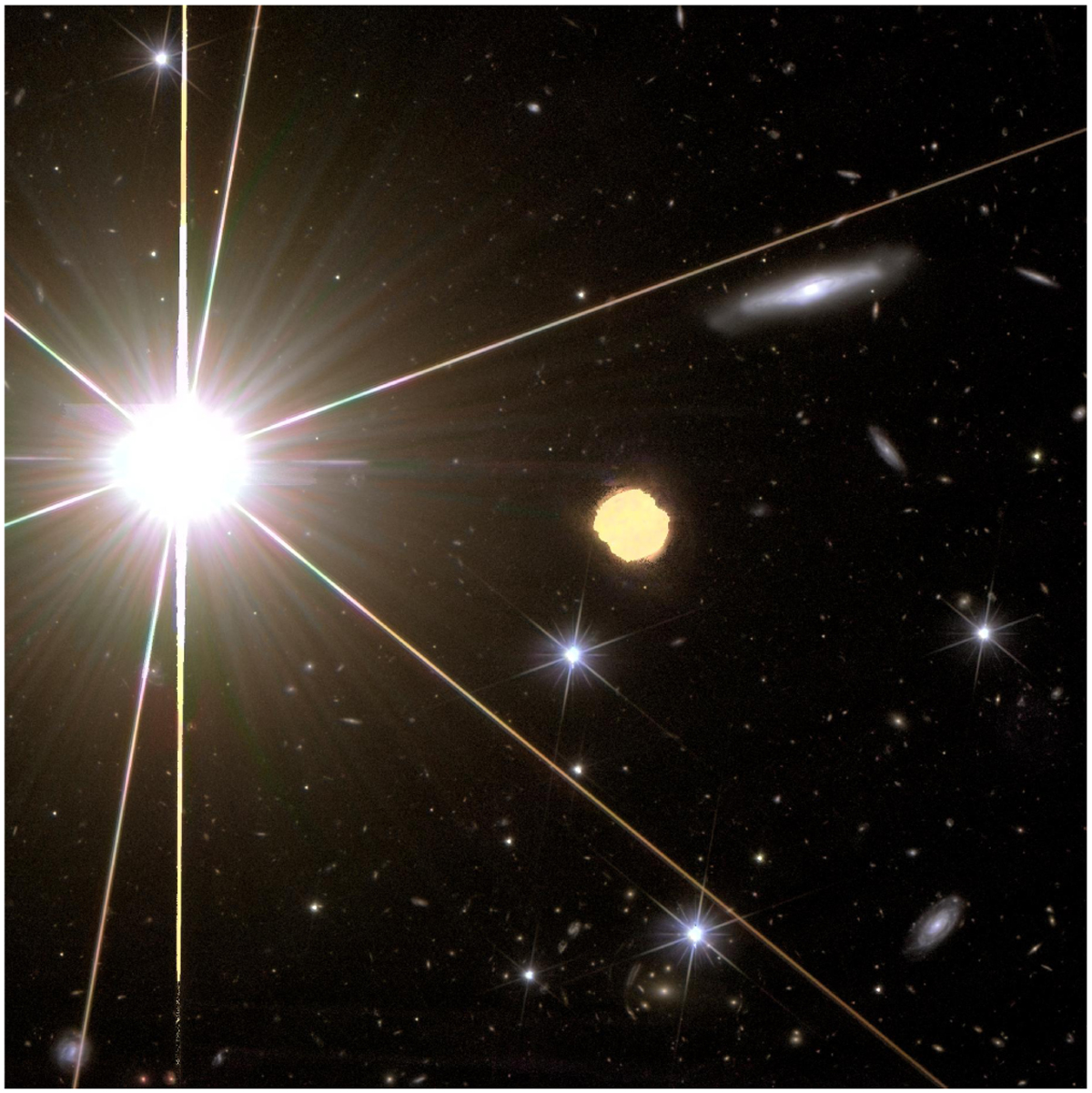Fig. 30

Download original image
Illustration of Euclid’s remarkable dynamic range, enabling LSB science. This paper quantifies Euclid’s capacity to measure faint extended emission in various ways. This capability is dramatically demonstrated through an extreme case where LSB features on the largest spiral galaxy in the top right corner are clearly visible, despite its proximity – just 2ʹ away - from HD 1973 (IE = 6.3, YE = 5.5, JE = 5.3, HE = 4.9). The field size is 3ʹ by 3ʹ. Faint galaxies are easily perceived within tens of arcseconds from this M3II star that is nearly visible to the naked eye: R=6.6 Vega magnitude, Pickles & Depagne (2010). This colour image was created by combining VIS and NISP data (without subtraction of the extended PSF model) using the IE-band for the blue, YE for the green, and HE for the red channel. The colour image at the NISP resolution is cast onto the VIS channel through a LAB (luminance + colours) combination to showcase the angular resolution and the sensitivity to LSB features. The oval structure at the centre is the result of a dichroic ghost in VIS caused by HD 1973 which appears yellow because the colour image is dominated at that distance from the star by the NISP extended PSF (green+red = yellow).
Current usage metrics show cumulative count of Article Views (full-text article views including HTML views, PDF and ePub downloads, according to the available data) and Abstracts Views on Vision4Press platform.
Data correspond to usage on the plateform after 2015. The current usage metrics is available 48-96 hours after online publication and is updated daily on week days.
Initial download of the metrics may take a while.


